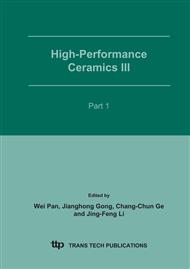p.1757
p.1761
p.1765
p.1771
p.1775
p.1779
p.1783
p.1787
p.1791
Thermal Fatigue Life Prediction of Ni Base Alloy Ceramic Composite Coating
Abstract:
Ni base alloy ceramic grain composite coating is used mostly in high temperature condition, so thermal fatigue failure will be easy. If the thermal expansion coefficients and elastic modulus of Ni base alloy and ceramic grain are different, there will be thermal stresses between grain and matrix in thermosyphon. The thermal stress will arouse the initiation and growth of thermal fatigue crack. We use Eshebly-Mori-Tanaka method to study the thermal stress field in matrix and grain. It can be shown that the more difference of thermal expansion coefficients between Ni base alloy and ceramic grain is, the bigger the thermal stress is. The thermal stress relates to volume fractions and elastic constants of Ni base alloy and ceramic grain. Based on low-cycle fatigue crack growth rate formation, the thermal fatigue life was computed. The bigger thermal stress is, the smaller thermal fatigue life is. Thermal life is an exponential function of crack initiation length and critical length.
Info:
Periodical:
Pages:
1775-1778
Citation:
Online since:
February 2007
Authors:
Keywords:
Price:
Сopyright:
© 2005 Trans Tech Publications Ltd. All Rights Reserved
Share:
Citation:


